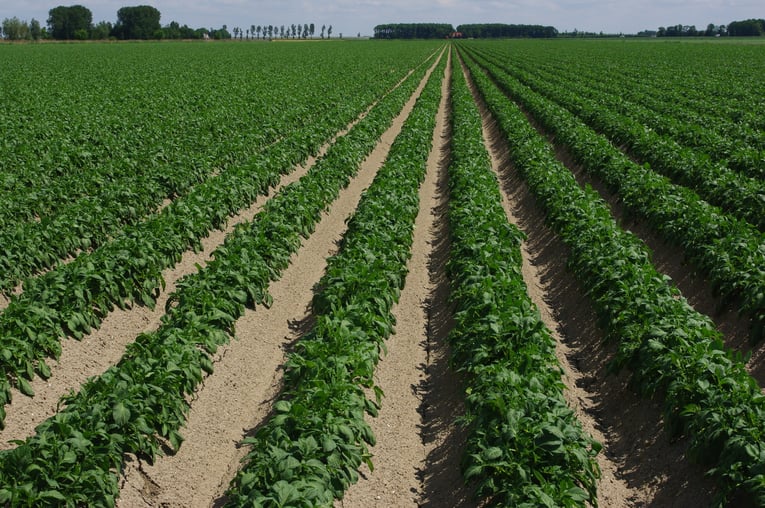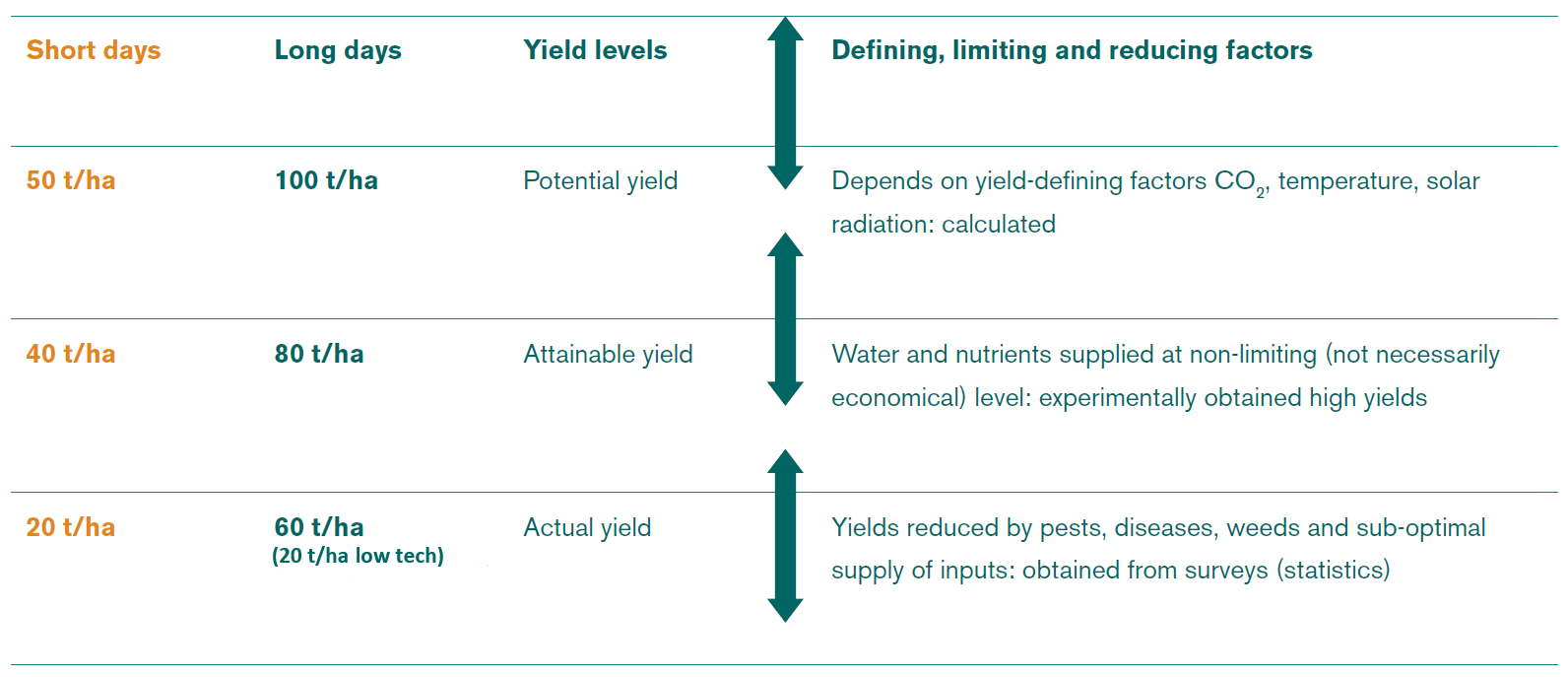
The attainable yield is the yield that a crop obtains when all possible care to the crop has been given. More fertilizers than economically beneficial and such that the plant still benefits from it before a negative effect of over-fertilization takes place. Similarly with water supply through irrigation.
The highest quality basic seed is applied and is planted on a soil devoid of pests and diseases. During growth, all pests and diseases are adequately controlled. Such a crop achieves the highest yields that can possibly be attained in the environmental conditions of the growing season. Management cannot alter the maximum and minimum temperatures, solar radiation, evapotranspiration nor day-length under standard production circumstances. These attainable yields are below potential, as in real field conditions plants face difficulties such as acquiring water during midday in sunny conditions with low relative humidity of the air. Nitrogen leaches when too much rain leaves the top soil through drainage. During the second half of the growing season intercepting all incident solar radiation is not possible due to lodging of stems thereby exposing soil. Therefore, attainable yields are less than potential by some 30%. Occasionally the best fields of the best growers in a particular year with non-limiting growing conditions almost reach the attainable level. This also happens at testing stations where all conditions are kept optimal and the economic optimum is not a topic of research.
Actual yields
Actual yields are those achieved by the majority of growers. Their crops may be subjected to pollutants such as ozone, have not received enough water, minerals and crop protectants but just enough to justify them economically or much less due to unavailability of inputs or ignorance. Actual yields are the average yields of all growers of a target crop in a region or country. This figure is 20 t/ha for China, 35 t/ha for Japan, 50 t/ha for Belgium, 7 t/ha for Burundi, 45 t/ha for starch potato in the Netherlands on sandy soils but 55 t/ha for ware potatoes on marine clay soil. Yields of seed potatoes in the Netherlands are 37 t/ ha, they are harvested almost 2 months before natural crop maturity. The highest actual yields in the world according to their state statistics are obtained by about 300 growers of the Columbia Basin in Washington State, USA, on their 66,000 ha: 73 t/ha.

The three yield levels and factors that determine or reduce them.
This blog discusses the Attainable yield and Actual yields of potato crops. To read about Potential yields and the Production formula refer to the blog on Calculation of potential yields.
Want to read what the Short and Long days have to do with the yield levels?
Read our Potato handbook, a global Potato University in 1 book!
Buy your copy today and get a one-year free subscription to PotatoWorld magazine.

